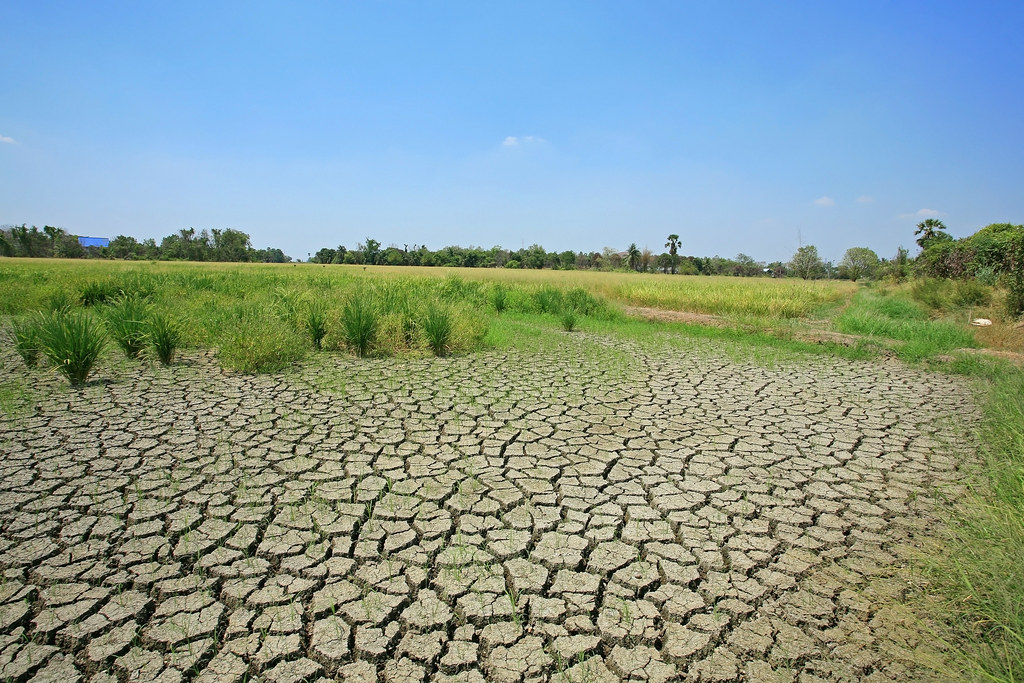https://e-info.org.tw/node/216264?utm_source=%E7%92%B0%E5%A2%83%E8%B3%87%E8%A8%8A%E9%9B%BB%E5%AD%90%E5%A0%B1&utm_campaign=8b441bd0c9-EMAIL_CAMPAIGN_2018_11_16_02_18_COPY_01&utm_medium=email&utm_term=0_f99f939cdc-8b441bd0c9-84956681
暖化臨界點更近了 研究:土壤濕度是陸地吸碳力關鍵
環境資訊中心外電;姜唯 翻譯;林大利 審校;稿源:ENS
2018年全球碳排創下新高,光是美國就增加了3.4%,海洋跟森林吸碳量都接近上限。哥倫比亞大學學者的最新研究結果再次確認,緩解氣候變遷刻不容緩——極端氣候可能影響陸地吸碳的能力,氣候潮溼年份的吸碳量無法補回乾旱年份減少的吸碳量。

人為排放溫室氣體二氧化碳,導致地球大氣中二氧化碳濃度升高,氣候系統被人類活動改變。海洋、森林和草原會吸收部分人類排放的二氧化碳,目前吸收比例大約是50%,反映在珊瑚白化、海洋酸化以及森林儲碳增加等現象。
「不過,我們並不清楚陸地是否能繼續照這個比例吸收人為碳排。一旦陸地達到吸收上限,全球暖化會加速,對人類和環境造成嚴重後果。這表示我們真的必須立刻行動,避免氣候變遷繼續惡化。」主持研究的哥倫比亞環境工程系副教授、地球學院兼任教授根廷(Pierre Gentine)表示。
根廷和他的博士生格林(Julia Green)合作,探討氣候乾濕循環和長期乾旱趨勢如何影響陸地吸收二氧化碳。他們也認為,降雨規律將會改變,影響地球植被吸碳的能力。
為了定義植物和土壤的吸碳量,根廷和格林用政府間氣候變遷專門委員會(IPCC)所定義的「淨生物區系生產力」(net biome productivity,NBP)來計算,也就是一個地區的淨碳增加或減少,等於生態系產碳減去森林大火或砍伐等活動造成的碳損失。
研究團隊用「全球陸地大氣耦合實驗-耦合模型比對計畫」(Global Land Atmosphere Coupling Experiment – Coupled Model Intercomparison Project,GLACE-CMIP5)的四個地球系統模型跑一系列的實驗,隔離出土壤濕度改變所導致的NBP減少,分析出長期土壤濕度趨勢改變對土壤吸碳能力的影響。
「我們發現NBP的值,也就是地表的淨碳增加,在土壤濕度沒有變異時是有變異時的兩倍。」格林說,「如果土壤濕度持續照目前速度減少NBP,陸地吸碳量到本世紀中繼續減少——如模型所顯示——我們很可能會經歷大氣中二氧化碳濃度大幅增加,以及相對應的暖化和氣候變遷。」
根廷和格林的研究結果顯示,土壤濕度變異和變乾都會減少碳匯。
「簡言之,如果接下來100年沒有乾旱跟熱浪,也沒有長期乾旱,陸地吸碳的能力會是現在的兩倍。因為土壤濕度對碳循環非常重要,跟陸地吸碳能力高度相關。」根廷說。
關於植物如何因應水壓力還有許多不確定性,根廷和格林將繼續探討如何量化研究土壤濕度改變對植物的影響。
他們的研究範圍目前聚焦於熱帶地區,因為變數最多、碳匯最高,探討植物活動如何因土壤濕度改變和大氣乾燥程度而改變。
Climate Tipping Point Could Occur Sooner Than We Think
A Columbia Engineering study, published today in the journal “Nature,” confirms the urgency of tackling climate change. Global carbon emissions reached a record high in 2018, rising by 3.4 percent in the United States alone, and oceans and forests are approaching their uptake limits.
This demonstrates that wetter-than-normal years do not compensate for losses in carbon uptake during dryer-than-normal years, caused by events such as droughts or heatwaves.
Emissions of the greenhouse gas carbon dioxide, CO2, caused by human activities are increasing the concentration of CO2 in the Earth’s atmosphere and producing unnatural changes to the planet’s climate system. The effects of these emissions on global warming are only partially abated as the land and ocean absorb some of the CO2 emitted by humans burning fossil fuels.
Currently, the oceans and forests and savannas on land are absorbing about 50 percent of these releases, explaining the bleaching of coral reefs and acidification of the ocean, as well as the increase of carbon uptake by forests.
“It is unclear, however, whether the land can continue to uptake anthropogenic emissions at the current rates,” says Pierre Gentine, associate professor of earth and environmental engineering and affiliated with the Earth Institute, who led the study.
“Should the land reach a maximum carbon uptake rate, global warming could accelerate, with important consequences for people and the environment. This means that we all really need to act now to avoid greater consequences of climate change,” Gentine said.
Working with his PhD student Julia Green, Gentine wanted to understand how variability in the hydrological cycle – droughts and floods, and long-term drying trends – was affecting the capacity of the continents to trap some of the emissions of CO2.
They also predict that there will also be a change in rainfall patterns that will likely affect the ability of the Earth’s vegetation to take up carbon.
To define the amount of carbon stored in vegetation and soil, Gentine and Green analyzed net biome productivity, or NBP, defined by the Intergovernmental Panel on Climate Change as the net gain or loss of carbon from a region, equal to the net ecosystem production minus the carbon lost from disturbance like a forest fire or a forest harvest.
The researchers used data from four Earth System Models from the Global Land Atmosphere Coupling Experiment – Coupled Model Intercomparison Project (GLACE-CMIP5), to run a series of experiments to isolate reductions in NBP that are due strictly to changes in soil moisture.
They were able to isolate the effects of changes in long-term soil moisture trends, such as drying, as well as short-term variability, such as the effects of extreme events such as floods and droughts, on the ability of the land to take up carbon.
“We saw that the value of NBP, in this instance a net gain of carbon on the land surface, would actually be almost twice as high if it weren’t for these changes – variability and trend – in soil moisture,” says Green, the paper’s lead author.
“This is a big deal! exclaimed Green. “If soil moisture continues to reduce NBP at the current rate, and the rate of carbon uptake by the land starts to decrease by the middle of this century – as we found in the models – we could potentially see a large increase in the concentration of atmospheric CO2 and a corresponding rise in the effects of global warming and climate change.”
Gentine and Green note that soil-moisture variability reduces the present land carbon sink, and their results show that both variability and drying trends reduce it in the future.
“Essentially, if there were no droughts and heat waves, if there were not going to be any long-term drying over the next century, then the continents would be able to store almost twice as much carbon as they do now,” said Gentine.
“Because soil moisture plays such a large role in the carbon cycle, in the ability of the land to uptake carbon, ” he urged.
There is still a great deal of uncertainty on how plants respond to water stress, and so Green and Gentine will continue their work on improving representations of vegetation response to soil moisture changes.
They are now focusing on the tropics, a region with lots of unknowns, and the largest terrestrial carbon sink, to determine how vegetation activity is being controlled by both changes in soil moisture as well as atmospheric dryness.
※ 全文及圖片詳見:







沒有留言:
張貼留言